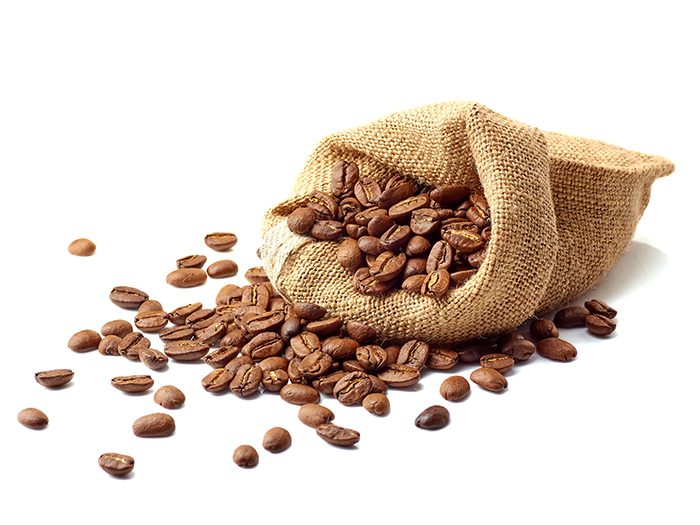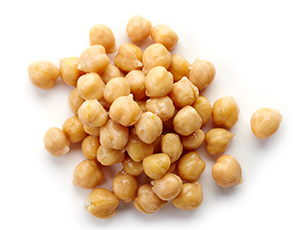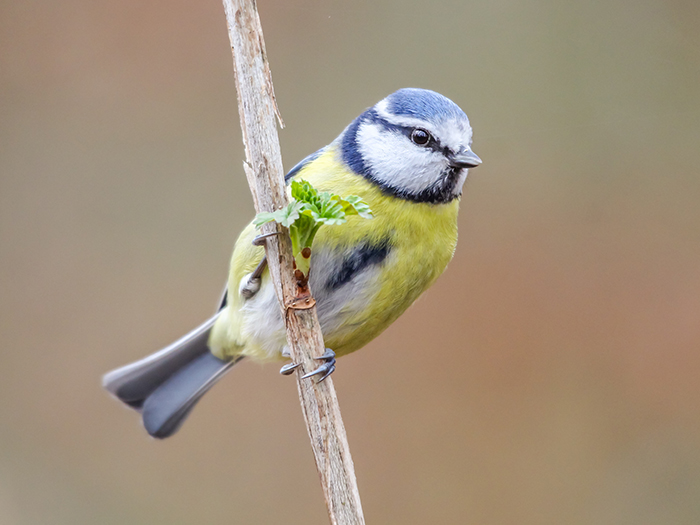Supply Chain Risk
15 Foods You Should Enjoy While You Still Can

Climate change is destabilizing the supply of many staple foodstuffs across the globe, while overfishing is having a similar negative impact on common fish.
Here’s a glimpse at just some of the foods that may become difficult or even impossible to get in the coming years, necessitating some soul-searching among food manufacturers.
1. Avocados
 Avocado trees like their surroundings not too hot and not too cold, and they always need water. Avocados require nine gallons of water per ounce to grow — that’s 72 gallons of water per fruit. 10 percent of the U.S. avocado supply is domestically grown in California, but the state’s challenged water supply can’t sustain the nation’s cravings for guacamole and avocado toast.
Avocado trees like their surroundings not too hot and not too cold, and they always need water. Avocados require nine gallons of water per ounce to grow — that’s 72 gallons of water per fruit. 10 percent of the U.S. avocado supply is domestically grown in California, but the state’s challenged water supply can’t sustain the nation’s cravings for guacamole and avocado toast.
One study estimated that climate change would hurt California avocado trees so much that the state’s production could be cut in half by 2050.
In Mexico, farmers are ramping up for higher demand by making more room for avocado crops — fueling the rapid deforestation of central Mexico’s pine forests.
2. Cocoa
As the National Oceanic and Atmospheric Administration states, cacao is only able to grow and prosper within a narrow set of conditions.
Not only can cacao only grow within around 20° north and south of the equator, but both the humidity level and the soil nutrient content must be just so.
Because so many cacao plantations are in regions where the average temperatures have become more volatile, therefore less suitable for ideal cacao growth, a study by the International Center for Tropical Agriculture suggests that farmers will begin to experience a decrease in cocoa production by 2030.
Exacerbating the problem, demand is far outreaching supply. Last year alone, consumers ate approximately 70,000 tons more cocoa than what was produced.
3. Coffee
 According to a 2017 study published in Proceedings of the National Academy of Sciences, climate change is threatening both the regions where coffee crops grow, and the bees that are responsible for about 20 to 25 percent of coffee bean production. When bees pollinate coffee crops, they not only widen the yield of the crops, but they also increase the quality of the beans.
According to a 2017 study published in Proceedings of the National Academy of Sciences, climate change is threatening both the regions where coffee crops grow, and the bees that are responsible for about 20 to 25 percent of coffee bean production. When bees pollinate coffee crops, they not only widen the yield of the crops, but they also increase the quality of the beans.
Rising temperatures and unpredictable weather could repel bees with lower heat tolerances, preventing them from pollinating coffee plants.
Additionally, Latin America’s coffee-suitable growing areas could shrink by up to 88 percent by 2050.
4. Soybeans
An international team of scientists led by the Potsdam Institute for Climate Impact Research developed a computer simulation that helped them determine how different important crops responded to rising temperatures — and their findings were grim.
According to researchers, if the world doesn’t experience significant reductions in emissions, soybean crops could drop by 40 percent by 2100.
People worldwide rely on soybeans for their protein. Soybeans account for 90 percent of the United States’ oilseed production and are a source of biofuels, making them an economically important bean.
5. Chickpeas
 Avocados aren’t the only food that depends on lots of water to grow. Chickpeas use a whopping 76 gallons of water for every ounce. Worldwide production of them has gone down 40-50 percent because of droughts across the globe. The Middle East is one of the most prolific producers of the legume, but the fact that they’re facing terrible water shortages doesn’t bode well for hummus lovers.
Avocados aren’t the only food that depends on lots of water to grow. Chickpeas use a whopping 76 gallons of water for every ounce. Worldwide production of them has gone down 40-50 percent because of droughts across the globe. The Middle East is one of the most prolific producers of the legume, but the fact that they’re facing terrible water shortages doesn’t bode well for hummus lovers.
6. Almonds
Almonds are also water hogs — it takes over a gallon of water to produce one single almond. So California’s droughts and volatile weather climate are doing the crops little good. Nearly all U.S. almonds are grown in California.
7. Bananas
Bananas, at least a different version of them, already went extinct 50 years ago. A species called Gros Michel was top banana worldwide until it was declared commercially extinct due to the Panama disease, a fungal disease that started out from Central America.
Desperately seeking alternatives, the industry settled upon the Cavendish cultivar, considered an inferior variety of banana but resistant to the fungus. Cavendish soon became the supermarket staple we currently know. But now the Cavendish is at risk too. The Cavendish banana is being taken over by a disease called “Tropical Race 4,” which disrupts the plant’s ability to properly absorb water and nutrients from soil. The disease is quickly spreading across continents, wiping out whole plantations.
8. Peanuts
Peanuts are considered a fussy crop, requiring a very stable climate to grow. Too little rain will prevent the seeds from germinating, while too much heat will scorch the shoots and halt growth. Too much rain, however, can cause the peanuts to grow mold and other diseases, rendering the crops inedible. The instability of climate change is taking its toll. Peanuts are grown primarily in the southern states — the same places suffering from the most droughts and warmest temperatures.
Even though 2017 growing season produced 3.5 million tons of peanuts, the outlook remains shaky unless the weather cooperates. If peanuts don’t go extinct, they’ll at least become a luxury item.
9. Strawberries
 Florida and California grow more than 95 percent of the U.S. strawberry supply. Hotter-than-normal weather delays the flowering and subsequent production of strawberries. According to the International Society for Horticultural Science, unstable climatic conditions through the crop season are resulting in abbreviated crop cycle durations. The trend could signify a more permanent decrease in strawberry production, as well as an increase in price.
Florida and California grow more than 95 percent of the U.S. strawberry supply. Hotter-than-normal weather delays the flowering and subsequent production of strawberries. According to the International Society for Horticultural Science, unstable climatic conditions through the crop season are resulting in abbreviated crop cycle durations. The trend could signify a more permanent decrease in strawberry production, as well as an increase in price.
10. Stone Fruits
In 2016, the northeast experienced an abnormally warm month in the middle of winter followed by two cold snaps. The warm spell tricked a variety of stone-fruit trees into flowering prematurely, and those crops were destroyed soon after by the cold snaps.
Peaches, nectarines, apricots, plums, and cherries were among the crops devastated by the severe temperature swings, and farmers predict that the likelihood of similar crop damage in the future is high.
11. Wine
 Wine grapes are best when picked after the rain after a long drought. But with droughts lasting longer than ever, some varieties are dying before they even get the chance to be harvested.
Wine grapes are best when picked after the rain after a long drought. But with droughts lasting longer than ever, some varieties are dying before they even get the chance to be harvested.
12. Maple Syrup
The sugar maple trees that produce syrup require specific and stable weather conditions. Because of climate change, the syrup-producing season has been starting earlier and earlier. In addition, warmer summers and droughts aren’t meeting the maple trees’ needs.
13. Eel
 The popularity of eel dishes in Japan has led to overfishing and has put eel on track to disappear completely. The price per pound has dropped somewhat from its 2013 all-time high, but eel populations are considered unlikely to rebound.
The popularity of eel dishes in Japan has led to overfishing and has put eel on track to disappear completely. The price per pound has dropped somewhat from its 2013 all-time high, but eel populations are considered unlikely to rebound.
14. Bluefin Tuna
Atlantic bluefin tuna is sought-after for sushi and sashimi in Asia. A single fish sold for over $1.75 million in 2013. Driven by high prices, fishermen use more sophisticated techniques to catch tuna, and fish are disappearing as a result.
15. White Fish
Overfishing by commercial fisheries is decimating the oceans’ population of white fish including popular species such as pollock, haddock, hoki, hake, cod, redfish, roughies, whiting and Chilean sea bass.










